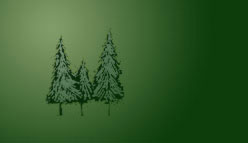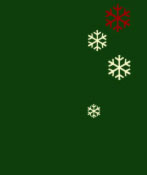|
MADNESS AND MELODIES - A DESCENT INTO THE MAELSTROM
The
ways of God in Nature, as in Providence, are not as our ways; nor are the models that we frame any way commensurate to the
vastness, profundity, and unsearchableness of His works, which have a depth in them greater than the well of Democritus. Joseph
Glanvill And travelers now within that valley, Through the red-litten windows,
see Vast forms that move fantastically To a discordant melody; While,
like a rapid ghastly river, Through the pale door, A hideous throng rush out forever, And laugh
but smile no more. Edgar Allan Poe Interestingly enough the
first quotation is actually a deliberate mis-quote by Poe at the outset of his short story A descent into the Maelström.
Glanville's Essays on Several Important Subjects in Philosophy and Religion acts as a rather dramatic backdrop by which
natural acts can be seen to be magnified to such an extent that divinity becomes the only suitable metaphor and/or explanation
for them. The storm in question was of a magnitude to impress upon the author's subconscious, religious referential coordinates
with which to understand the event. The second quotation has a far more disturbing quality to it as it relates to the turmoil
prevalent within Usher's mind. A tempestuous and inevitable insanity that immediately brings to mind Plath's Bell Jar. All of these thoughts
swirl about in my own mind when I see my mother's paintings. Sensually disturbing and highly provocative they prod me to consider
what lays behind and beyond them. Certainly as a composer, published by the house of Ricordi (famous since the time
of Verdi and Puccini et al), I am attracted to the musical references that she draws upon and appears to use as her own personal
space-time coordinates for a happy and productive existence. Yet, I return to Poe for there remains an ethereal quality
to them all that can best be captured within the word 'spectral'. As a musician I appreciate their professionalism. Be it
a subconscious respect for classical 'golden section' techniques within a formalist perspective, or the well defined layering
of background, middle ground and foreground coupled with a decorative style reminiscent of baroque overtones. Furthermore,
as a professional I applaud only naturalness which I find them to exhibit in abundance. Yet still they continue to provoke
me. She is my mother. Should she really have a depth to her that intuitively comprehends the horror of our modern psychology?
As a son I pray that all insight is not born of lived experience. Although thoughts and sensations are not of themselves concrete,
they remain very real for those who have them and store them away in memory as tangible experience and referential material. All of her works bring
to mind the Mediterranean of Lorca, the gothic of Poe, the baroque of Bach and the effortless classicism of Mozart. Swirling,
spectral images juxtaposed and through-composed easily bring to mind the disparate qualities of Stravinsky's Rite of Spring
and the more languid moments of lapsed tension in Debussy's Jeux. It has always been a dangerous game to play, interdisciplinary
metaphors. But it remains for me an enjoyable one with only one winner! Freud and Jung converge within the mental labyrinth
to offer their own reference points but between those who have shared the familial growing up process from different perspectives
subjectivity becomes its own guessing game. Munch's Scream becomes a ghastly reference point for one barbed wire, bandaged
figure which could relate to anything from personal despair to a comment upon Alberto Giacometti's existential style of displaying
life en passant. However the difference seems to me instead that my mothers paintings are photo flashes of existential
reality caught just before or just after an event rather than during the event itself. In short, they are simultaneously anticipatory
and commentary. Past and Future with no relative Present. For this I term them spectral. They manipulate time through the
negation of a present reference point, and as such skip along as a nerve impulse down a myelin sheath. They have a true quantum
character and would no doubt have satisfied Democritus to boot! Joshua Ruan - contemporary
composer published by Ricordi UK __________
Following years of study and experience in a variety of disciplines Marion's son has had works
published in both the musical and scientific/spiritual spheres. He was the youngest contemporary classical composer signed
to Ricordi in 1992 and the Lorca commission received 24 performances in one month in England alone before going on to tour
Spain. The work was commissioned by Repsol Oil for the production and was produced under the direction of 'Cirque du Soleil'.
Click Here to view Original Ricordi Publishers Brochure (outside)
Click Here to see Original Ricordi Publishers Brochure (Inside)
Joshua Ruan - Original Publishing Contract with Ricordi
| Joshua Ruan |
|
|
| International Who's Who entry |
| Joshua Ruan |
|
|
| Entry in International Who's Who |
Click here to download file of above entry in Who's Who for Joshua Ruan
Review of music commissioned for British Premiere of Lorca Play 'Once Five Years Pass'
Non musical publications include entries in DISF and comprise: Bioethics, Anthropic Principle,
Extraterrestrial Life, Infinity and Information -
Interdisciplinary Encyclopedia of Religion and Science ISSN: 2037-2329
'We really love the
painting and it is hanging in our bedroom. I am from Kent and my wife grew up in Sussex, I always think of home and English
country gardens when I look at the picture.' Andrew
Hone - Canadian collector with reference to Poppies in Gallery 1 __________
'So I have visited your "Virtual Gallery" and
found your work absolutely delightful and very original. It strikes me as gentle and yet very powerful at once. It's interesting
the way you use color and texture, sometimes representing something very soft and tender, and other times going for the gusto
with extreme boldness and impact. I especially like "Spring" (very fairy-like), "Thin Ice" (feel the chill), "The Forest"
(you can see it for the trees). I also love the "Concerto" for its vibrancy and vivdness. One can literally hear the music
pouring out of it!' Yolanta Kruk
- Gaelic Singer and Flautist (Montreal, Canada and Ireland) __________
December 4, 1997 Attention:
Marion Harding c/o Lewarne Gallery Dear Marion, As you may recall, I dropped by a few weeks ago
to view your show, by the way which I enjoyed. I especially liked the work with the cascade of violins on the right side of
the gallery near the visitor's book. Congratulations on the show. I must have seemed rude for departing without imparting a word but I was actually on my way to the airport
and rather concentrated on my itinerary. So please excuse my abrupt visit. I have just returned only days ago and am in the
process of catching up with things, one of which is to congratulate you on your show. Sincerely University of B.C. Department of Fine Arts
29 October 1997 - PRESS RELEASE Marion Harding's work is full of layered transparencies, inviting a movement
into the texture of music. The painting "Firebird" portrays all of the various themes of that concerto, while "Ventian Vespers",
a small green and gold painting is virtually haunted with the paeans of sombre holy music. Gerry Lewarne Lewarne
Galleries 2331 Granville St. ___________
|




